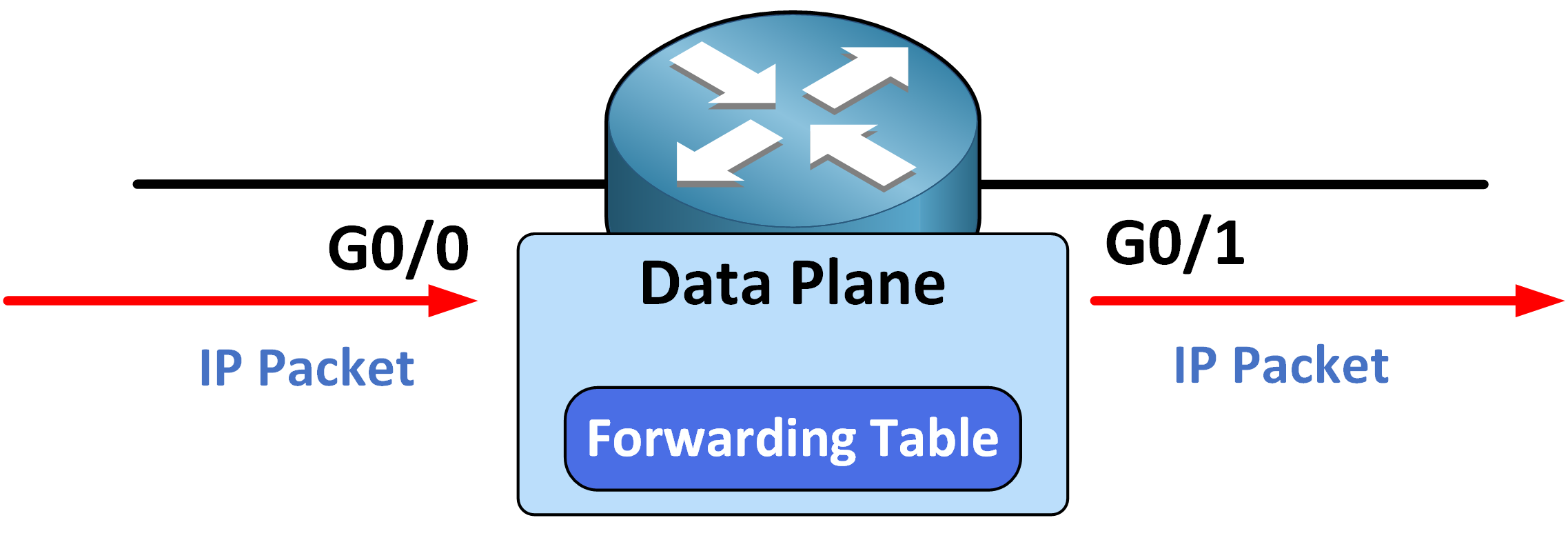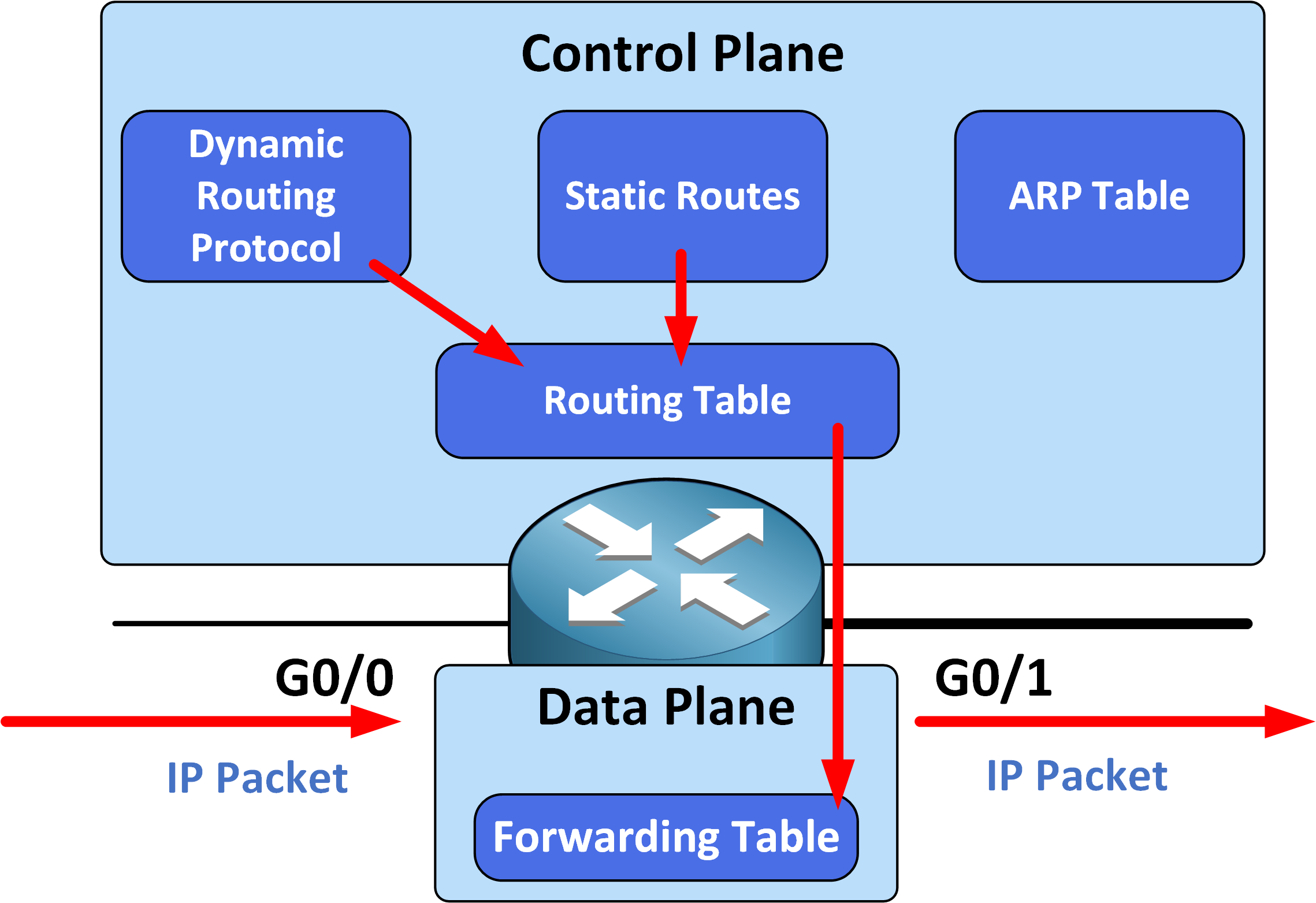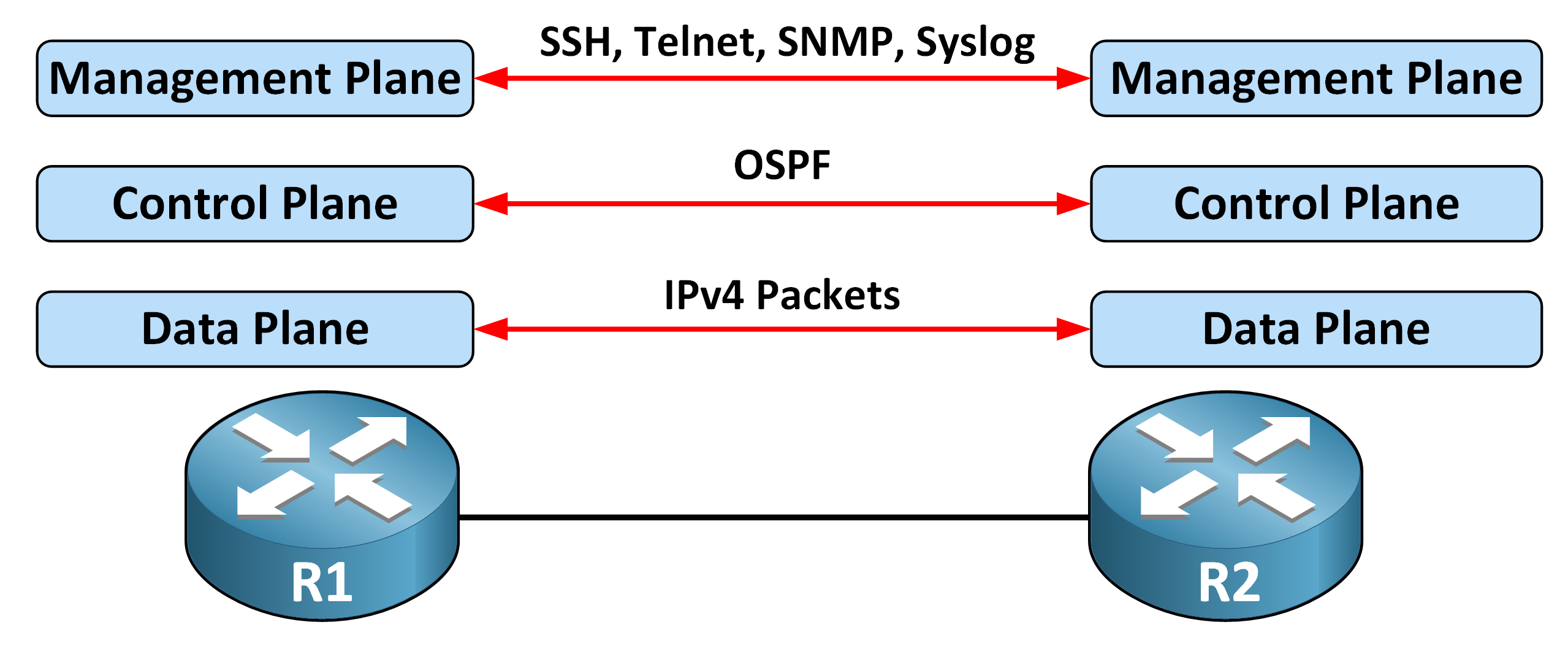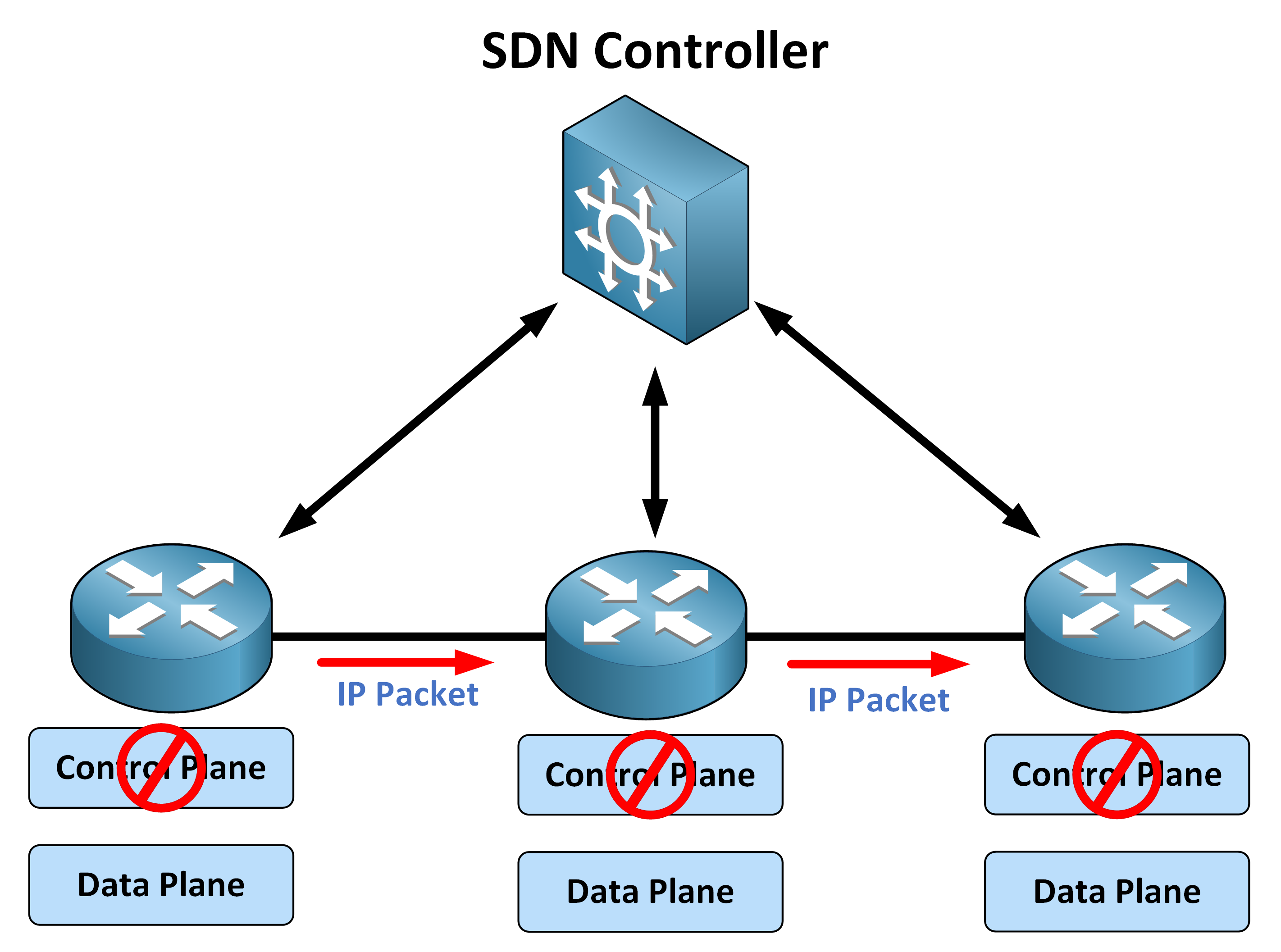Software Defined Networking (SDN) is a network architecture defined in RFC 7426 that changes how you think about network management. First, let's see how network devices work in the traditional model.
Traditional Networking
Traditional networking relies on dedicated hardware devices such as routers and switches, each with its own Control plane, Data plane, and Management plane. These components work together to ensure network communication, but they also come with limitations in scalability, automation, and flexibility...
Data Plane
The Data Plane (or "forwarding plane") is responsible for forwarding packets based on routing decisions made by the Control Plane. It ensures packets are transmitted efficiently to their correct destinations.

Figure 1 – Traditional Networking and the Data Plane
In traditional networking, the Data Plane relies on a Forwarding Table generated by the Control Plane. Each packet is inspected to determine its next-hop destination.
Control Plane
The Control Plane makes routing and forwarding decisions. It builds the Routing Table using both:
Dynamic Routing Protocols (OSPF, EIGRP), which automatically adapt to network changes.
Static Routes, manually configured by network administrators.
Additionally, the ARP Table resolves IP addresses to MAC addresses for Layer 2 communication.

Figure 2 – Role of the Control Plane in Packet Forwarding
By maintaining these tables, the Control Plane enables efficient packet forwarding while minimizing CPU overhead.
Management Plane
The Management Plane allows network administrators to configure, monitor, and manage network devices via protocols like SSH, Telnet, or HTTP/HTTPS.

Figure 3 – Management Plane Communication Between Routers
Limitations of Traditional Networking
Traditional networking is based on a distributed control model, where each device (router or switch) operates independently, making decisions locally. This approach has several limitations:
Complex Management: Configuring each device separately is time-consuming and error-prone.
Lack of Automation: Manual configurations increase operational overhead.
Limited Scalability: Growing networks require extensive manual effort.
Vendor Lock-in: Proprietary hardware and software limit flexibility.

Figure 4 – Traditional Networking Planes and Their Limitations
Next Steps: In the next chapter, we’ll explore how SDN transforms traditional networking by centralizing
Answer the question below
Software-Defined Networking (SDN) is a modern approach to network management that separates the Control Plane from individual network devices and centralizes it in a single, software-based SDN Controller.
In traditional networks, each device (like routers and switches) has to make its own routing and forwarding decisions. SDN changes this by moving all decision-making to the SDN Controller.

Figure 5 – SDN Architecture with Centralized Control Plane
40 % Complete: you’re making great progress
Unlock the rest of this lesson
If you’d like to continue your CCNA journey, simply create your free account.
Access all CCNA lessons
Practice with hands-on labs
Train with Practice exams and Quizzes
Progress tracking in your dashboard
Made by network engineers - CCNP certified
learners globally
Software Defined Networking (SDN)
Software Defined Networking (SDN) centralizes the control plane in an SDN Controller, simplifying management and automation compared to traditional distributed networks. This lesson will show you how its layered architecture and APIs make networks more scalable and flexible.